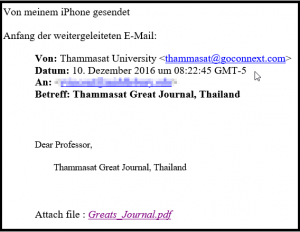Why
The ACTT recommended a fall 2016 Panopto Pilot, following the spring 2016 evaluation of streaming media and video asset management services. 10 Undergraduate and 8 MIIS courses used Panopto for video streaming. Students that also used Canvas in their courses could access video from Panopto, however they had to log in again. Some faculty at MIIS also used the webcasting feature successfully, including interactive discussion and note-taking features. Sharing videos via Canvas site embedding and through a link has resulted in a good user experience, however it currently requires separate logins to Canvas and Panopto platforms.
Panopto has indicated that it would add the following features to the video streaming service by December 17th:
- Quizzing — Instructors can add multiple choice, multi-select, and true/false questions into any video using the Panopto editor. Viewers can take quizzes in the interactive player, and instructors can access real-time reports of all responses.
- Captions — Users can access Panopto’s machine-generated speech-to-text captions and modify them in the video editor. In addition, users can customize the color, size, and position of captions during playback.
- Primary Video Switching — For multi-camera recordings, video creators can switch between primary video feeds using the Panopto editor.
- Enhanced Editing — Adding the ability to upload custom thumbnails, and to upload and manage slides within the video timeline.
A shortcode plugin for WordPress has been added to sites.middlebury.edu/sites.middlebury.edu. Currently it is not possible to add a Panopto video to Drupal, but other schools have solutions for embedding in Drupal that they are willing to share.
Feedback on Panopto has been generally good, and it has been useful for the classes that did use it. Departments are interested in the service that Panopto provides.
Recommendation Summary
The Academic Cyberinfrastructure Transformation Team recommends adding Panopto to the ITS fiscal year 2018 budget.
- Middlebury contracts a Panopto enterprise license for 3-5 years
- Middlebury encourages Panopto to provide better integration with Canvas
- This will enable the decommissioning of Middmedia, Muskrat, and other video streaming services in a separate project. This should be considered at the end of FY19.
Implementation Timeline
Most of this work has been accomplished during the Fall 2016 pilot of Panopto. There is some work being done by Panopto technical staff to provide better integration with Canvas, they have let us know it is scheduled to be completed by December 17, 2016.
| What | Who | When |
| Budget Proposal | January 2017 | |
| Budget Decision | May 2017 | |
| Panopto Pilot continues | Spring 2017 | |
| Test LTI – Pilot | Spring 2017 | |
| Implement Panopto including SSO and Canvas LTI | Media Services and Academic Technology | June-July 2017 |
| Train Middlebury and MIIS HelpDesk & Media Services staff | June-July 2017 |
Support
Outline of responsibilities
| What | Who |
| Panopto Support available to users | 4 authorized contacts may receive support via: phone, email
General users may use chat and web tickets |
| Pedagogy/Instructional Design-related support | Primary: Academic Tech, DLC, DL
Backup Support: Media Services |
| Administrative-use support (core functions) | Primary: Media Services* |
| Other academic support (creativity & innovation project, student internship w/ or w/out credit, faculty research, symposium) | Primary: Media Services
Backup Support: Academic Tech, DLC, DL |
| Training | Media Services, Academic Tech, DLC, DL |
* Conversations are occurring to identify course-related and administrative department support for the Middlebury Institute of International Studies at Monterey.

